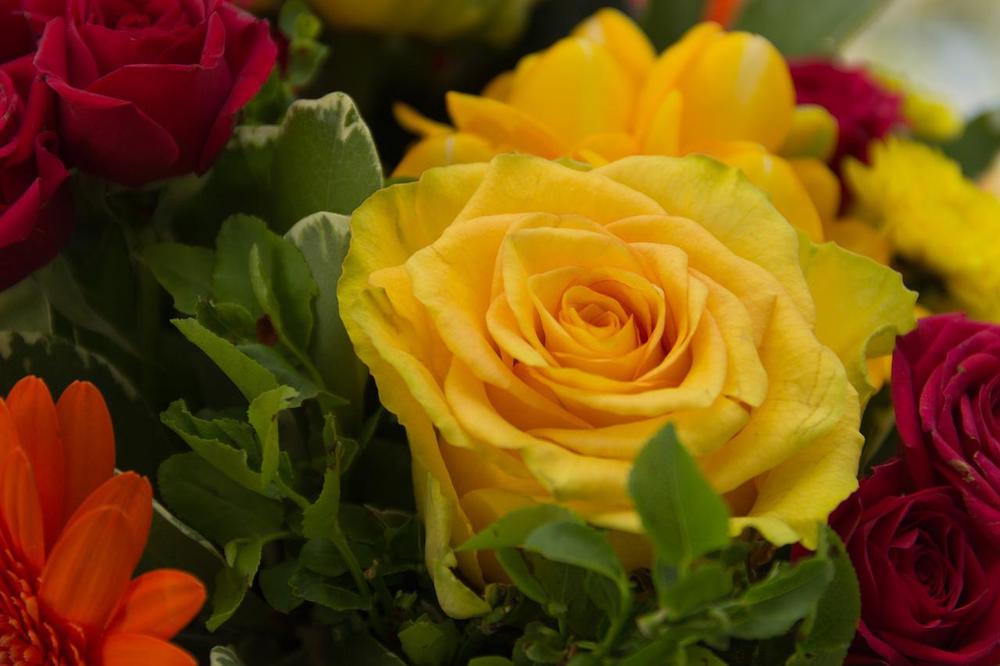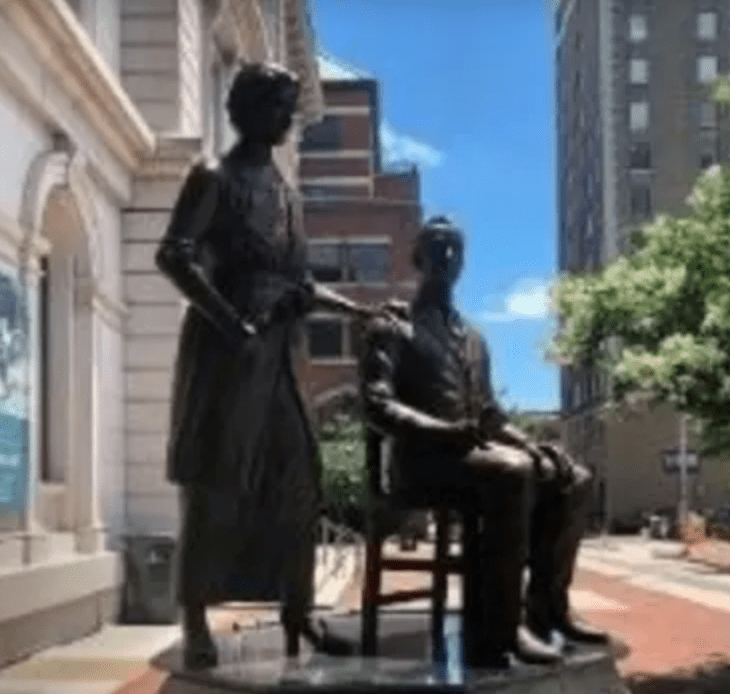How Women’s Right To Vote Impacted Perception of Yellow Rose
By Jill Brooke

Proving that red roses are sometimes not always the best choice, a son opts to listen to the advice of his mother which results in women getting the right to vote in 1920.
It was back in 1920. Harry T. Burn, the youngest member of Tennessee’s state legislature arrives for the ratification of the 19th Amendment, wearing a red rose on his lapel. This meant an anti-suffragist vote instead of wearing the yellow one that supporters wore.
As Tennessee State Museum curator Miranda Fraley-Rhodes explains, the 19th Amendment was just one state shy of ratification, with thirty-five states having already passed it. American women needed Tennessee’s vote to make it the “Perfect Thirty-Six.”
A special session of the Tennessee legislature is called, and members of the General Assembly “show their colors” by wearing roses on their lapels. When a woman convinces a legislator to join their side, they ceremoniously pin a rose on his jacket. By counting the number of red roses worn by the representatives at that moment, it appeared that the amendment would be defeated.

WHY LISTENING TO YOUR MOTHER IS GOOD ADVICE
Burn is going to be the deciding vote but gets a letter from his mama, a widowed farmer named Febb Ensminger Burn urging her 24-year-old son to “Hurrah and vote for suffrage.” He follows his mother’s request.
Understandably pandemonium ensues with suffragists throwing yellow roses in the air in victory. When asked by furious delegates why Burn changed his mind, he replies, “I knew that a mother’s advice is always safest for a boy to follow.”
How can anyone attack that logic? It is one of the best comeback lines ever – and one that is also relatable.
So did Henry T. Burn go yellow – usually a color meaning cowardice? Just the opposite of course since it took great courage to defy his colleagues which could have resulted in career suicide. But in this particular moment in time, the yellow rose soon shifted in perception.
This is why in the language of flowers, the yellow rose is now associated with friendship, hope and loyalty. And as it turns out, the right for a woman to vote.
WHITE AND YELLOW ROSES WERE SYMBOLS OF SUFFRAGISTS
As Skinner explains, in the early 1900s, Tennessee suffragists marched for women’s voting rights in communities across the state wearing the colors adopted by the National American Woman Suffrage Association — white and golden yellow.
Those colors stood for purity and hope, respectively, and were used during parades. Furthermore, the women carried golden yellow banners which they created to express the spirit of the movement, and later yellow roses became an emblem of the suffrage cause.”
ANOTHER SOURCE FOR THE TERM “WAR OF THE ROSES”
In contrast, the anti-suffragists adopted red roses as their symbol. Advocates quipped that this protest was a “war of the roses.”
In fact, history buffs may be interested to know about the original “war of the roses.” This was a series of English civil wars for control of the throne of England fought from 1455 to 1487 between supporters of two rival branches of the royal House of Plantagenet: the House of Lancaster represented by a red rose, and the House of York, represented by a white rose.
When they forged a peace agreement, white and red roses – and later hybrids – became symbols of peace and unity. And now wedding ceremonies in England often feature these hybrid roses.
DID COURAGE PAY OFF?
So what happened to Harry T. Burn (1895-1977) for his courageous vote? Yes, he won his next election. Hooray.
Years later when asked about his decision, Burn’s family said he didn’t regret his vote. “I think it was morally right,” he said. “I thought it then, I still think it.”
In fact, there is now a statue of Febb and Harry Burn commissioned by the Knoxville Suffrage Coalition. Harry is seated with his mother’s loving hand on his shoulder. The inscription on the statue reads, “A giant step toward a more perfect union.”

Jill Brooke is a former CNN correspondent, Post columnist and editor-in-chief of Avenue and Travel Savvy magazine. She is an author and the editorial director of FPD and a contributor to Florists Review magazine. She also won the 2023 AIFD (American Institute of Floral Designers.) Merit Award for showing how flowers impact history, news and culture
